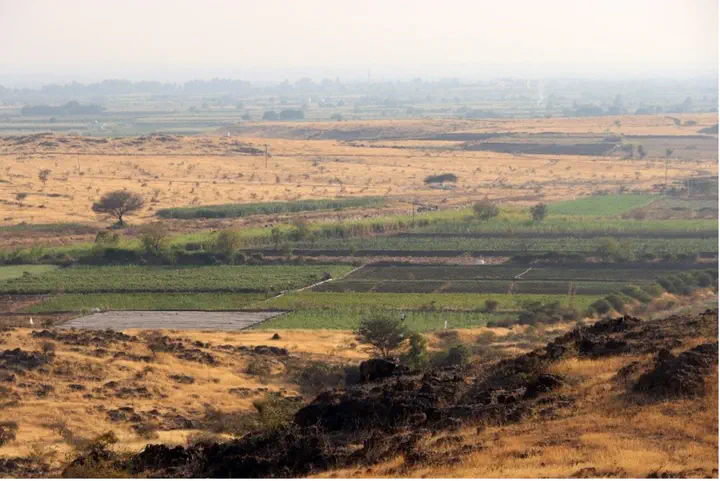Good crop bad crop? Novel insights into land use change drivers of winter bird assemblage in India's agriculture-savanna mosaics
 © Johannes Kamp
© Johannes Kamp
Avian biodiversity in agricultural landscapes is declining globally. In Europe and America, agricultural homogenization and the decline of smallholder farming are key drivers of bird population declines. In South Asia, large expanses of compositionally diverse agricultural landscapes still exist. Yet, how resident and migratory avian populations respond to landscape composition and configuration on wintering grounds is largely unknown.
Leveraging recent advances in remote sensing, we mapped landscape composition and configuration to analyze their impacts on resident and migratory birds in agriculture-savanna mosaics of western India. We measured landscape composition as the proportional cover of annual crops, semi-perennial cash crops (primarily sugarcane), savanna and woody vegetation, and compositional heterogeneity as the Shannon diversity of these land cover types. We measured landscape configuration as the mean crop field size. We modeled abundance and richness of 118 resident and 26 Palearctic migratory bird species as a function of landscape composition and configuration.
The richness and abundance of resident birds increased with an increasing land-cover diversity, and an increasing proportion of semi-perennial crops. The richness and abundance of Palearctic migratory winter visitors were negatively affected by increasing land-cover diversity. A higher proportion of annual crops was associated with higher resident bird densities, whereas the richness response to the proportion of annual crops remained inconclusive. Guild-based models suggested that migratory carnivores tended to be more abundant in less diverse landscapes with a low proportion of cropland. Open-ground preferring Palearctic species were positively associated with a higher proportion of semi-perennial crops and negatively associated with woody vegetation, while shrub-breeders were positively associated with a high proportion of annual crops and woody vegetation. The effect of mean field size on resident and Palearctic migratory birds was inconclusive.
We conclude that i) winter bird assemblages of resident and migratory species in agriculture-savanna mosaics of western India are driven more by agricultural composition than configuration, ii) resident birds adapt to the high compositional heterogeneity of smallholder agriculture and iii) Palearctic migratory species primarily rely on compositionally simpler, grassy savannas. Therefore, the maintenance of heterogeneous, smallholder agriculture, and sparing the savannas from agricultural expansion and afforestation should be key conservation priorities.
See the full paper here: Bhagwat, T., Rufin, P., Kuemmerle, T., & Kamp, J. (2025). Landscape composition drives winter bird assemblages in agriculture–savanna mosaics of western India. Ecological Applications, 35(2), e70016.